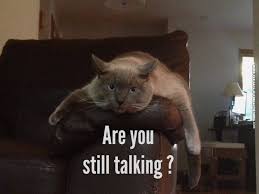 Summertime, and the writing is easy, right? I took a week off but I’m back with more ways to improve your dialogue.
Summertime, and the writing is easy, right? I took a week off but I’m back with more ways to improve your dialogue.
Writing Tip for Today: Here are some advanced dialogue techniques you can try:
Gender Bender
One of the most difficult dialogue techniques to master has to be writing the opposite gender. I think males writing female dialogue or females writing male dialogue could benefit from listening to the opposite gender when you’re out in public. It wouldn’t hurt to listen to your significant other as well, but in this case, I mean listening not only to what the opposite gender says, but HOW THEY SAY IT. If you’re a guy, you might not understand that women (in general) are nurturers, and we often have a lot to say. Women also tend to speak in longer sentences and often express views in terms of emotion rather than logic. Men are very visual creatures, and while they speak fewer words as a rule, they will often speak those words more succinctly and to the point. When you take a look at your dialogue coming from the opposite gender, evaluate it in terms of women’s tendencies to over-explain things and men’s habits of cutting to the chase. The next time you’re eavesdropping at the mall, also take note of the speaker’s body language. Do they make eye contact while speaking? Are their arms in a defensive or open posture. Do they speak while slouching? Are they too soft, too loud? Do they respect the other person’s individual space or do they stand too close? Observing these things can help you lift your dialogue so that it rings true to the reader.
That Pesky Dialect
Always problematic, writing authentic dialect can be a challenge both in writing and in reading. If you pepper your dialogue with too many apostrophes for dropped g’s or include too many phonetically spelled words, readers can get bogged down and stop reading. A better strategy might be to add a few words here and there to flavor the speech but not make it tiresome to the eye. The same idea is good for including foreign language words. In most cases, season lightly with foreign words and phrases and if the expression isn’t a common one, include a simple translation in the head of the POV character. By simple I mean just the English word. EX: After Sofia lost everything in the fire, it was so hard to be bon vivant. No lap of luxury at the Starlight Motel.
Surprise Your Reader
Another more advance dialogue technique is learning to surprise your reader. If a character asks, “How are you?” we automatically think, “I’m fine, thanks.” In order to lift this dialogue from trite to terrific, think of a rejoinder that the reader can’t see coming. Here’s an example from Elizabeth Strout’s Pulitzer Prize-winning novel, Olive Kitteridge.
“Well I can see why Henry married her. I wasn’t sure at first, but when I got a look at his mother at the funeral—ah, poor thing. But she didn’t seem to have a bit of oomph to her.”
“Well, she’s about broken with grief.”
The second bit of dialogue here could have simply agreed with the first speaker. But instead, Strout gives us a window into the story and its characters. By replacing yes-no dialogue with either questions which require a more complex answer or substituting surprising rejoinders for those yesses or noes, your dialogue will pique more reader interest—as well as keep them reading.





Pingback: How Deep POV Elicits Emotions - Linda S. Clare
Pingback: Writing Rhythm: Pace - Linda S. Clare